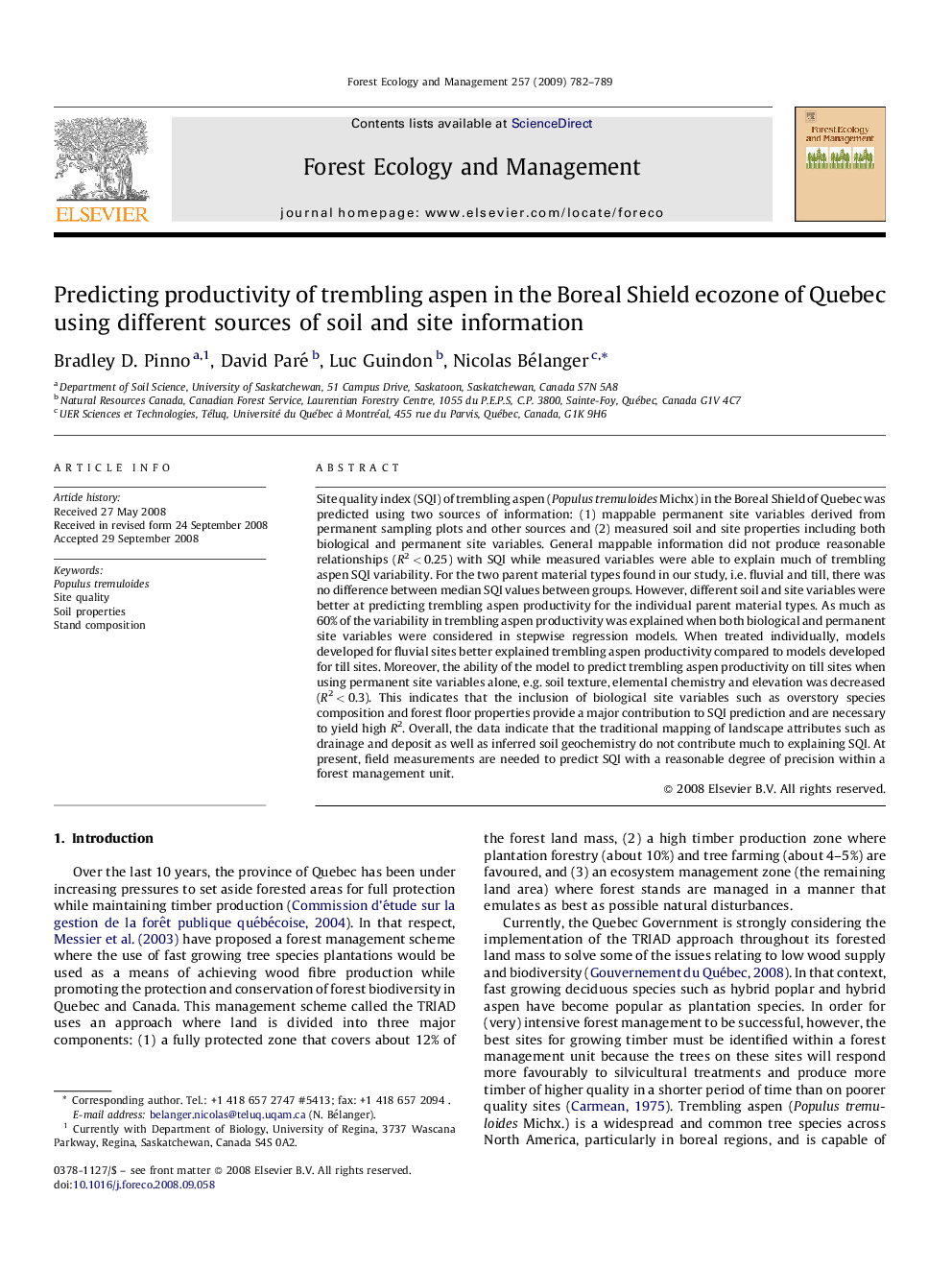| کد مقاله | کد نشریه | سال انتشار | مقاله انگلیسی | نسخه تمام متن |
|---|---|---|---|---|
| 89084 | 159332 | 2009 | 8 صفحه PDF | دانلود رایگان |

Site quality index (SQI) of trembling aspen (Populus tremuloides Michx) in the Boreal Shield of Quebec was predicted using two sources of information: (1) mappable permanent site variables derived from permanent sampling plots and other sources and (2) measured soil and site properties including both biological and permanent site variables. General mappable information did not produce reasonable relationships (R2 < 0.25) with SQI while measured variables were able to explain much of trembling aspen SQI variability. For the two parent material types found in our study, i.e. fluvial and till, there was no difference between median SQI values between groups. However, different soil and site variables were better at predicting trembling aspen productivity for the individual parent material types. As much as 60% of the variability in trembling aspen productivity was explained when both biological and permanent site variables were considered in stepwise regression models. When treated individually, models developed for fluvial sites better explained trembling aspen productivity compared to models developed for till sites. Moreover, the ability of the model to predict trembling aspen productivity on till sites when using permanent site variables alone, e.g. soil texture, elemental chemistry and elevation was decreased (R2 < 0.3). This indicates that the inclusion of biological site variables such as overstory species composition and forest floor properties provide a major contribution to SQI prediction and are necessary to yield high R2. Overall, the data indicate that the traditional mapping of landscape attributes such as drainage and deposit as well as inferred soil geochemistry do not contribute much to explaining SQI. At present, field measurements are needed to predict SQI with a reasonable degree of precision within a forest management unit.
Journal: Forest Ecology and Management - Volume 257, Issue 3, 10 February 2009, Pages 782–789